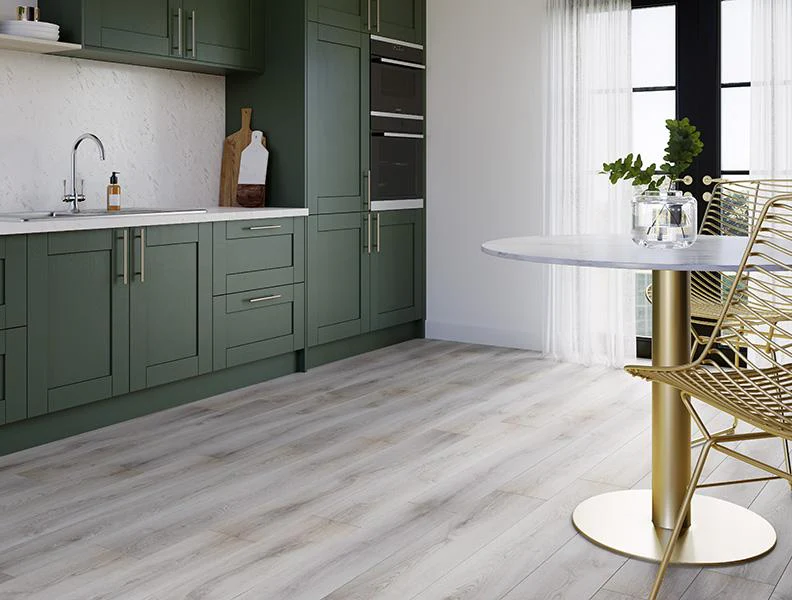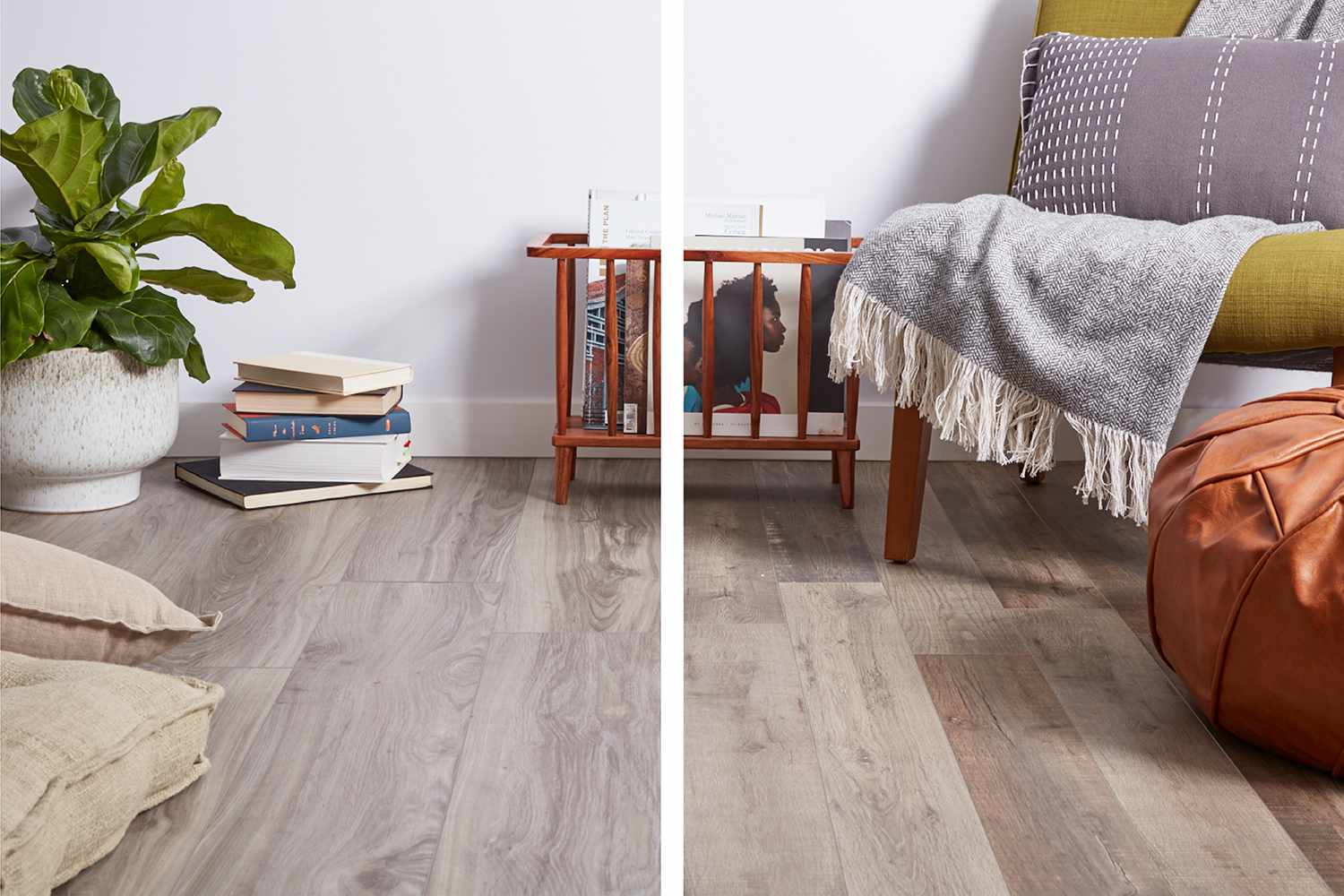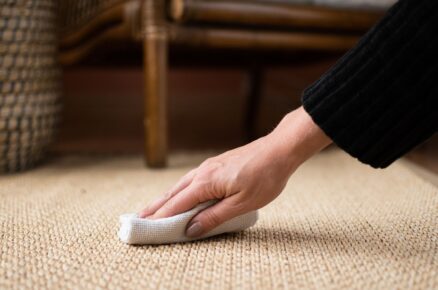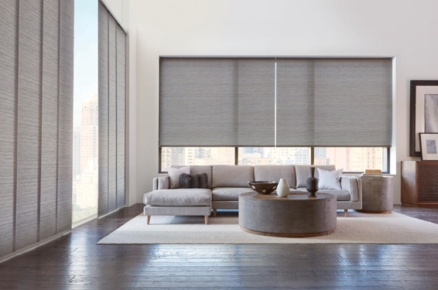Flooring is an important aspect of your home decor. It can transform the look and feel of your home while also adding value to it. Two popular flooring options that you may consider for your home are Luxury Vinyl Tile (LVT) and hardwood. In this article, we will compare the two and help you decide which flooring option is right for you.
What is LVT?
Luxury Vinyl Tile (LVT) is a type of resilient flooring that is made of multiple layers of synthetic materials that are compressed together. It is designed to mimic the look of natural materials like stone or wood. LVT can be used in any room in your home, including high-moisture areas like bathrooms and kitchens. It is also a popular choice for commercial spaces due to its durability and ease of maintenance.

What is hardwood?
Hardwood is a type of flooring that is made of solid wood planks or engineered wood. It is a natural material that can add warmth and character to your home. Hardwood is typically used in living areas and bedrooms, but it can also be used in kitchens and dining rooms.

Durability
LVT
LVT is highly durable and can withstand heavy foot traffic. It is resistant to scratches, stains, and dents. Luxury Vinyl Tiles flooring are also water-resistant, which makes it a good choice for areas that are prone to spills or moisture. It is a good option for homes with pets and children.
Hardwood
Hardwood is also durable, but it is susceptible to scratches and dents. It can be prone to water damage and should not be used in high-moisture areas. Hardwood is not as resistant to wear and tear as LVT.
Maintenance
LVT
LVT is easy to maintain. It can be cleaned with a damp mop and a mild cleaner. It does not require any special treatments or finishes.
Hardwood
Hardwood requires regular maintenance to keep it looking its best. It should be swept or vacuumed regularly to prevent dirt and debris from scratching the surface. Hardwood also requires periodic refinishing to keep it looking new.
Installation
LVT
LVT is easy to install and can be done by a DIYer with some basic tools. It can be installed over most existing flooring, including concrete and wood subfloors.
Hardwood
Hardwood flooring installation requires a professional. It is a more complex process that involves preparing the subfloor and ensuring that the planks are installed correctly.
Aesthetics
LVT
LVT can mimic the look of natural materials like wood, stone, and tile. It is available in a wide range of colors and patterns, and it can be cut into a variety of shapes and sizes. LVT can create a modern or traditional look in your home.
Hardwood
Hardwood adds warmth and character to your home. It comes in a variety of wood species, each with its own unique grain pattern and color. Hardwood can create a classic, timeless look in your home.
Cost
LVT
LVT is generally less expensive than hardwood. It is a cost-effective option for homeowners who want the look of natural materials without the high price tag. LVT can range in price from $2 to $7 per square foot, depending on the quality and design.
Hardwood
Hardwood is generally more expensive than LVT. It is a premium flooring option that adds value to your home. Hardwood can range in price from $5 to $20 per square foot, depending on the wood species, grade, and finish.
Environmental impact
LVT
LVT is an eco-friendly option for homeowners who are concerned about the environment. It is made of synthetic materials that are recyclable and can be repurposed. LVT is also energy-efficient to produce and transport.
Hardwood
Hardwood is a renewable resource, but its production and transportation can have a significant environmental impact. The harvesting and processing of hardwood can contribute to deforestation and habitat destruction. However, some hardwoods are certified by organizations like the Forest Stewardship Council (FSC), which promotes sustainable forestry practices.
Sound
LVT
LVT is a good sound insulator. It can reduce noise transmission between floors and rooms. LVT also has a cushioned backing that can absorb sound.
Hardwood
Hardwood can be noisy, especially in high-traffic areas. It can creak and squeak as people walk on it. Hardwood can also transmit noise between floors and rooms.
Conclusion
Choosing the right flooring option for your home depends on your personal preferences and lifestyle. LVT and hardwood both have their advantages and disadvantages. LVT is durable, easy to maintain, and cost-effective, but it may not have the same warmth and character as hardwood. Hardwood is beautiful, timeless, and adds value to your home, but it requires more maintenance and can be more expensive. Consider your budget, style, and practical needs when deciding which flooring option is right for you.












